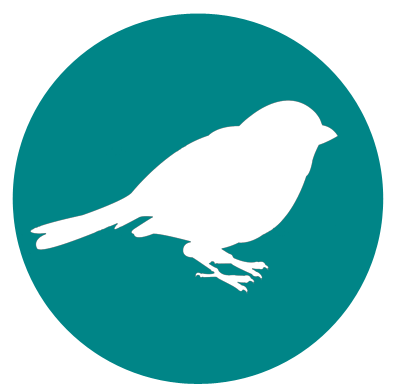Birding at Killbuck Marsh Wildlife Area
Shreve, OhioVisiting this Site

Site Maps & Info
Information about this site.
Killbuck Marsh Wildlife Area
Visiting Information
Closed hours/season
The refuge between Centerville Road and Force Road is always closed to the public. The Wright Marsh area is closed for the first two weeks of waterfowl hunting season unless you have a permit. Other than these two exceptions, Killbuck Marsh WA is open all year.
Parking Areas
There are approximately 25 designated pull-off areas for parking.
Fees/Permits
None.
Restroom Facilities
None.
Harmful Insects, Poisonous Plants, or Animals
Mosquitoes and poison ivy.
Restaurants in the Area
Des Dutch Essenhaus, 176 N. Market Street, Shreve, Ohio
Shreve Dari-Bar, 136 W. South Street, Shreve, Ohio
Quick Chek/Subway, 275 N. Market Street, Shreve, Ohio
Pine Tree Barn, 4374 Shreve Rd, Wooster, Ohio
Other Useful Information
Please observe all posted signs and be careful not to trespass on private property. Force Road dead-ends at the Killbuck Creek, off both SR 83 and Valley Road. The bridge on Valley Road, between Clark Road and Force Road, has been closed of years, but is scheduled to re-open sometime in 2004.
Other Birding Spots in the Area
Shreve Lake Wildlife Area, Brown’s Bog, Funk Bottoms Wildlife Area, Secrest Arboretum.
General Information
Address
1691 Centerville Rd, Shreve, OH 44676
County/Counties
Holmes, Wayne
DeLorme Page Number and Coordinates
(7th Edition and earlier) Page 50, C-3
Nearest Town or City
Eight miles southwest of Wooster, Ohio.
Directions from Nearest Town or City
From Wooster, take SR 3 south to SR 226.
About Killbuck Marsh Wildlife Area
The Killbuck Marsh Wildlife Area is located in both Wayne & Holmes Counties in “Amish Country”. At over 5000 acres, it is the largest inland marsh in Ohio. First-time visitors will probably need a map to get around. Maps can be picked up at the wildlife station or found at the web-site listed above.
To start at the northwest corner of the Killbuck Marsh WA, take SR 3 south from Wooster and veer left to get on SR 226. Turn left onto Carrie Lane (formally Messner Road), which dead-ends into a parking area with walking access to Wright Marsh. In the spring, huge rafts of ducks can often be seen here. Remember to stay off the private property that borders the wildlife area.
Return to SR 226 and travel south less than a half mile. Turn left into the Wright Marsh parking lot. From here you can walk to several impoundments. During migration, look for waterfowl and shorebirds.
Continue on SR 226 and turn left onto Willow Road. At the railroad tracks there are parking areas that overlook impoundments on the left and a private duck-hunting area on the right.
Crossing the railroad tracks, look for Prothonotary Warblers and Red-shouldered Hawks in the woods along this stretch of road. Continue on Willow Road, which turns to the right and becomes a gravel road (the paved road straight ahead is called Kimber Road from this point). This is a good road to look for passerines. There is a parking area on the right where you can pick up a primitive walking trail.
Continue on Willow Road. At the top of the hill, go straight ahead and the road merges with Valley Road. You will come to large open area of water on the left just before reaching Clark Road. This spot hosts waterfowl, warblers, vireos, and both orioles. Black Terns often come through here during migration. When the water level is low, look for shorebirds.
Turn left onto Clark Road. At the first crossroads, turn right onto SR 83. At the first right, turn onto Force Road. After passing through private property, you will reach the wildlife area. This road is often very rough. Look for Yellow-breasted Chats, White-eyed Vireos and Wild Turkeys. There is a parking area just before a small bridge. At the water, nesting Hooded Mergansers and Common Moorhens are possible. This road dead-ends at the Killbuck Creek and this final stretch of road to the river is occasionally totally underwater and impassible. The left (south) side of the road is a refuge and is closed to the public.
Return to SR 83 and turn right. Then turn right onto County Line Road (also known at Centerville Road). At the first parking area on the left, you can pick up a primitive walking trail. A few hundred feet down the road, check near the bridge for nesting Yellow-throated and Prothonotary Warblers. In winter, look for Yellow-rumped Warblers.
Continue on County Line Road. Along this stretch, watch for Sandhill Cranes and Wild Turkeys. The lane to Killbuck Marsh wildlife station is a few miles up the road on the right. A box at the beginning of the lane holds maps of the area.
Continue on County Line Road until you reach Shreve Eastern Road, which veers to the right, then make another immediate right onto Valley Road. Turn right onto Force Road (a sign here reads No Outlet). At the bottom of the hill is a parking area. From here it’s a short walk along the road to the spot where you can see the Bald Eagle nest in the closed refuge, on the right side of the road. Other nesters in this area include Red-headed Woodpeckers, Marsh Wrens, Willow Flycatchers, and Sandhill Cranes. Force Road dead-ends at the Killbuck Creek, so you will have to go back up Force Road and turn right onto Valley Road, which makes another right at the top of the hill.
At the bottom of the hill on this section of Valley Road is a large, open marsh dominated by Marsh Wrens. This is also a good spot for Virginia Rails and Soras. As you approach the Killbuck Creek, turn around in one of the parking areas as the bridge is currently closed (this bridge is due to reopen sometime in 2004).
Returning to the top of the hill, turn right onto Force Road, then right on to Cemetery Road. You will come to a large wetland area on the corner of Cemetery Road and SR 226 that attracts large numbers of waterfowl. There is a small parking area on the right. A spotting scope will be helpful at this spot.
Turn right onto SR 226 and check the private pond directly across from the Wright Marsh Parking Area. When the water is low in the spring and fall, this can be quite a hot-spot for shorebirds. Continue north on SR 226 and check out the pond behind the Pine Tree Barn for waterfowl. This is also private property.
Turn right onto Valley Road. Just before the railroad track and bridge is the Moore Marsh parking area. Check out the impoundments for water birds. Northern Rough-winged Swallows usually nest under the bridge.
Crossing the railroad track and bridge, you can turn right on Valley Road, which will eventually take you back to the Clark Road area, or make a left turn onto Messner Road. Most years this bottomland hosts nesting Brown Creepers, Prothonotary Warblers, and Red-shouldered Hawks. Red-headed Woodpeckers are usually easily found along this road.
At the next crossroads you will reach Prairie Lane. Turning left at Prairie Lane, towards Wooster, you will come to several lakes and marshland. This is all private property. Watch for fast moving traffic.
Turning right off Messner Road, Prairie Lane soon merges with SR 83. The Killbuck Marsh area runs for miles along this stretch in both Wayne and Holmes Counties. Most of the land along here is private property, so look for signs. After you pass County Line Road , there are several pull-offs. One of the pull-offs on the right, by an oil tank, has been a good place to see Sandhill Cranes. The next parking area south is beside Butler Spring; one of the few places in the area that has open water all winter.
You will probably find your own favorite birding spots as you get to know the area. Enjoy!
Birds of Interest by Season

Winter
Check out Butler Spring, on SR 83, where there is open water for most of the winter.
Spring
An excellent area throughout for waterfowl and shorebirds. Black Terns sometimes show up on Clark Road and Wright Marsh.
Summer
Prothonotary Warblers, Yellow-breasted Chats, Hooded Mergansers, Bald Eagles, Sandhill Cranes, Wild Turkeys, Marsh Wrens, Brown Creepers, Northern Rough-winged Swallows, Orchard Orioles, Virginia Rails, Soras, and Common Moorhens are just some of the birds that nest most years at the Killbuck Marsh Wildlife Area.
Fall
Also an excellent time and area for waterfowl and shorebirds. Black Terns sometimes show up on Clark Road and Wright Marsh.
